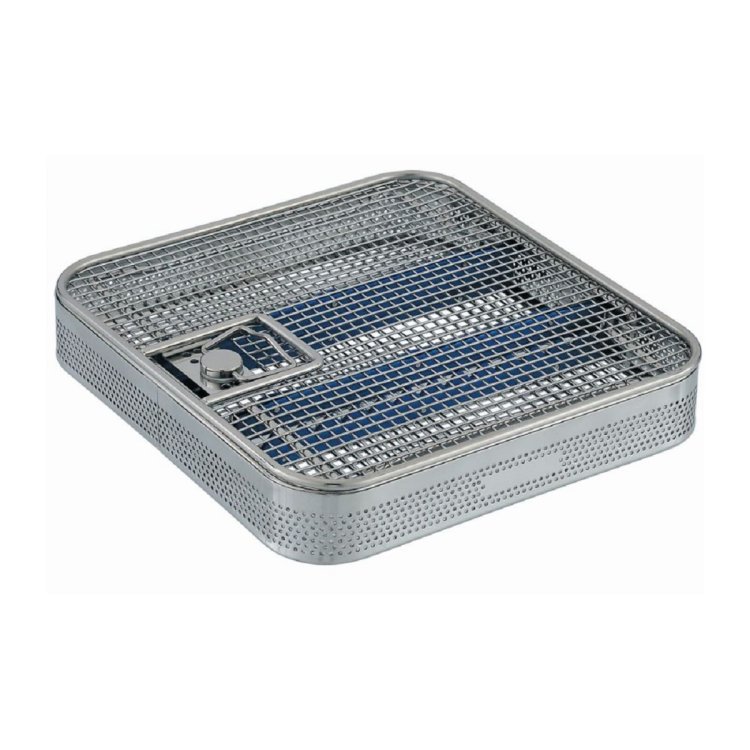Precision in Surgery: The Bipolar Forceps Basket
This article delves into the significance of the bipolar forceps basket, its mechanism of action, applications, and the impact it has on surgical outcomes.
Share this Post to earn Money ( Upto ₹100 per 1000 Views )

In the ever-evolving landscape of surgical techniques and tools, precision reigns supreme. Surgeons strive for accuracy, efficiency, and safety in every procedure they undertake. Among the myriad instruments at their disposal, the bipolar forceps basket stands out as a crucial tool for achieving precision in surgery. This article delves into the significance of the bipolar forceps basket, its mechanism of action, applications, and the impact it has on surgical outcomes.
Understanding the Bipolar Forceps Basket
The bipolar forceps basket is a specialized instrument used in minimally invasive surgery (MIS) procedures, particularly in laparoscopic and robotic-assisted surgeries. It consists of two electrically insulated forceps jaws that can grasp and manipulate tissue without causing damage to surrounding structures. Unlike traditional monopolar forceps, which require a return electrode pad to complete the electrical circuit, bipolar forceps utilize two tips to deliver electrical energy directly to the tissue, minimizing the risk of unintended thermal injury.
Mechanism of Action
The bipolar forceps basket operates on the principle of electrosurgery, where controlled electrical currents are used to cut, coagulate, or seal tissue. When activated, the forceps jaws generate high-frequency electrical energy that passes through the tissue held between them. This energy causes localized heating, leading to coagulation and sealing of blood vessels, effectively controlling bleeding during surgery. Additionally, the bipolar nature of the instrument ensures that the electrical current remains confined within the tissue, reducing the risk of collateral damage to adjacent structures.
Applications in Surgery
The versatility of the bipolar forceps basket makes it indispensable across various surgical specialties. In general surgery, it facilitates precise dissection and hemostasis during procedures such as cholecystectomy, appendectomy, and hernia repair. In gynecology, it aids in the removal of ovarian cysts, ectopic pregnancies, and endometrial ablation. Moreover, in urology, it enables meticulous tissue manipulation during procedures like nephrectomy and prostatectomy.
One of the significant advantages of the bipolar forceps basket is its compatibility with advanced surgical platforms, including robotic-assisted systems. By integrating seamlessly with robotic arms, surgeons can perform complex maneuvers with enhanced dexterity and control, further optimizing surgical precision.
Enhancing Surgical Outcomes
The adoption of the bipolar forceps basket has revolutionized surgical practice by improving procedural efficiency and patient outcomes. Its ability to achieve precise tissue dissection and hemostasis reduces operative time, minimizes blood loss, and decreases the risk of postoperative complications such as bleeding and infection. Furthermore, the preservation of surrounding structures ensures better functional outcomes and cosmesis, particularly in cosmetic and reconstructive surgeries.
The use of bipolar forceps in minimally invasive techniques also contributes to shorter hospital stays, faster recovery times, and reduced healthcare costs. Patients benefit from less pain, smaller incisions, and improved cosmetic results, leading to higher satisfaction rates and improved overall quality of life in chaplet north america.
Challenges and Future Directions
While the bipolar forceps basket offers numerous advantages, challenges persist, particularly regarding cost and training. The initial investment required for acquiring the instrument and maintaining the associated equipment can be substantial for healthcare institutions. Additionally, proper training and proficiency in its use are essential to maximize its benefits and minimize the risk of complications.
Looking ahead, ongoing research and development efforts aim to further refine the design and functionality of bipolar forceps, enhancing their performance and expanding their applications. Advances in technology, such as integrated feedback systems and automation, hold the potential to make surgical procedures even safer and more efficient.
Conclusion
The bipolar forceps basket represents a cornerstone of modern surgical practice, empowering surgeons to achieve unparalleled precision and safety in a wide range of procedures. Its ability to deliver controlled electrical energy directly to tissues, while minimizing collateral damage, makes it indispensable in minimally invasive surgery. By harnessing the power of electrosurgery, the bipolar forceps basket continues to shape the future of surgery, driving innovation and improving patient outcomes.















